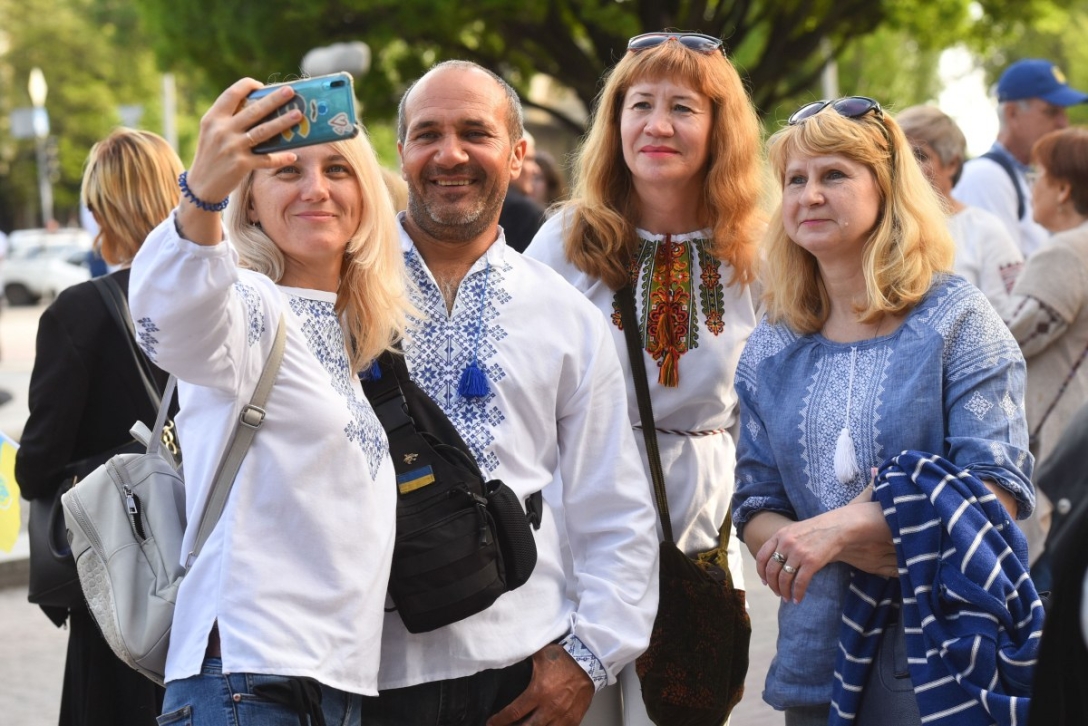Сьогодні, 16 травня 2024 року, Україна відзначає День вишиванки, свято, яке стало символом національної єдності та патріотизму. Незважаючи на те, що цей день має всього 18-річну історію, він вже став невід’ємною частиною культурного календаря країни та відзначається усіма шари населення.
16 травня 2024 року в Україні вкотре відзначать День вишиванки. Зараз свято особливо важливе, оскільки Росія продовжує знищувати українську культуру і все, що з нею пов’язано.
Коли виник День вишиванки
У 2006 році студентка історичного факультету Чернівецького національного університету Леся Воронюк запропонувала одногрупникам прийти на заняття у вишиванках. До ініціативи долучилися викладачі, а згодом ідея поширилася і в інших містах. Після цього в третій четвер травня в Україні та в українських діаспорах по всьому світу відзначають День вишиванки.
Цього року свято припадає на 16 травня. У 2023 День вишиванки святкували 18-го числа.
Коли українці почали носити вишиванки
За даними деяких істориків, ще за часів палеоліту люди, які проживали на території України, прикрашали одяг вишивкою. Найстаріші вишиванки в Україні археологи виявили біля села Мізин на Чернігівщині.
Згодом у Миколаївській області було проведено розкопки могили знатної та багатої сарматки. У кургані Соколова Могила археологам вдалося розкопати вовняний одяг, імовірно, сорочку, оздоблену давньою вишивкою. Цей факт доводить важливість вишитого одягу для людей, адже його клали навіть у могилу разом із золотом.
Також вишиванки були знайдені в Києво-Печерській лаврі. Вбрання вишивала мати гетьмана Мазепи.
Щодо мотивів, то здебільшого це були геометричні візерунки, квіткові орнаменти. Зокрема, використовувалися такі вишивальні техніки як пряма гладь і “ретязь” (різновид “хрестика”). Вона була особливо популярною на заході України. Основні кольори — червоний і чорний. Чорний символізував горе і печаль, червоний — радість і любов.
Як відомо, квіти з’явилися набагато пізніше, ніж геометричний візерунок. Популяризував їх виробник парфумерії “Брокар і К°”. Його дружина Шарлотта Раве вирішила доповнювати недорогу косметику для середнього класу листочками зі зразками вишивки. Після цього нові на той момент мотиви поступово інтегрувалися в народні орнаменти.
Сучасна ж вишиванка може похвалитися розмаїттям фасонів, технік вишивки, кольорів і креативів. Люди носять вишиті сукні, корсети, спідниці.
Наприклад, президент України Володимир Зеленський у 2022 році демонстрував вишиванку з танками. Малюнок придумала майстриня з Білорусі Руфіна Базлова. Прикрашають вбрання стилізовані зображення чоловіка і жінки, а також танк і БТР.
Візерунок — оберіг для вишиванки
Орнаменти вишиванки несли в собі не тільки естетичне задоволення, а й зашифроване послання, код роду, стаючи оберегом людини. Дитині вишивали сорочку із вбрання її батьків, наречена створювала вишиванку для свого коханого. Часто сенс конкретних орнаментів губився з поколіннями, адже майстрині просто повторювали за бабусями і прабабусями, але магічного ефекту від цього ніхто не відміняв.
Візерунком-оберегом прикрашали ту частину одягу, яка прикривала найвразливіші частини тіла людини — горло, серце.
Як святкувати День вишиванки 2024 року
Особливих заходів до Дня вишиванки не організовують, особливо в часи продовження повномасштабної війни з РФ і постійної небезпеки. Люди цього дня одягають свій одяг, можливо, від минулих поколінь. Українці демонструють національне вбрання на вулицях і діляться патріотичними кадрами в соцмережах, зберігаючи пам’ять про святковий травневий день.




